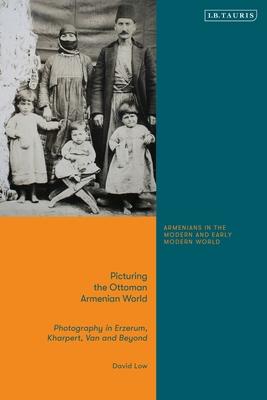The Armenian contribution to Ottoman photography in the last decades of the empire has been well-documented. Studios founded and run by Armenian Ottomans in Istanbul contributed to the exciting cultural flourishing of Ottoman ’modernity’, before its dissolution after World War I. Less known however are the pioneering studios from the east in the empire’s Armenian heartlands, whose photographic output reflected and became a major form of documenting the momentous events and changes of the period, from war and revolution to persecution, migration and ultimately, genocide.
This book examines photographic activity in three Armenian cities on the Armenian plateau: Erzurum, Kharpert and Van. It explores how indigenous photography was rooted in the seismic social, political and cultural shifts that shaped Armenian lives during the Ottoman Empire’s last four decades. Arguing that photographic practice was marked by the era’s central movements, it shows how photography was bound-up in Armenian educational endeavours, mass migration and revolutionary activity. Photography responded to and became the instrument of these phenomena, so much so that it can be shown that they were responsible for the very spread of the medium through the Armenian communities of the Ottoman East and the rapid increase in photographic studios.
Contributing to growing interest in Ottoman and Middle Eastern photographic history, the book also offers a valuable perspective on the history of Armenians in the Ottoman Empire.
| FindBook |
有 1 項符合
Picturing the Ottoman Armenian World: Photography in Erzerum, Kharpert, Van and Beyond的圖書 |
 |
Picturing the Ottoman Armenian World: Photography in Erzerum, Kharpert, Van and Beyond 作者:Low 出版社:I. B. Tauris & Company 出版日期:2022-07-28 語言:英文 規格:精裝 / 288頁 / 普通級/ 初版 |
| 圖書館借閱 |
| 國家圖書館 | 全國圖書書目資訊網 | 國立公共資訊圖書館 | 電子書服務平台 | MetaCat 跨館整合查詢 |
| 臺北市立圖書館 | 新北市立圖書館 | 基隆市公共圖書館 | 桃園市立圖書館 | 新竹縣公共圖書館 |
| 苗栗縣立圖書館 | 臺中市立圖書館 | 彰化縣公共圖書館 | 南投縣文化局 | 雲林縣公共圖書館 |
| 嘉義縣圖書館 | 臺南市立圖書館 | 高雄市立圖書館 | 屏東縣公共圖書館 | 宜蘭縣公共圖書館 |
| 花蓮縣文化局 | 臺東縣文化處 |
|
|
圖書介紹 - 資料來源:博客來 評分:
圖書名稱:Picturing the Ottoman Armenian World: Photography in Erzerum, Kharpert, Van and Beyond
內容簡介
作者簡介
David Low is a photographic historian specialising in the photography of the Ottoman Armenian world, and the wider intersections between photography, migration and exile. Currently Visiting Scholar, at the AGBU Nubar Library, Paris, France, he received his PhD from the Courtauld Institute of Art, University of London, UK, and has published articles in peer-review journals such as International Journal of Armenian Genocide Studies and Études arméniennes contemporaines.
|










